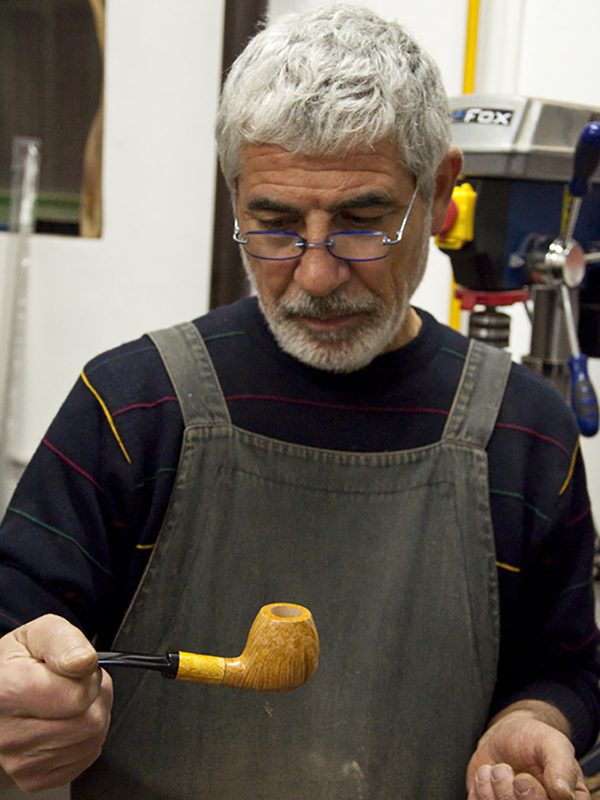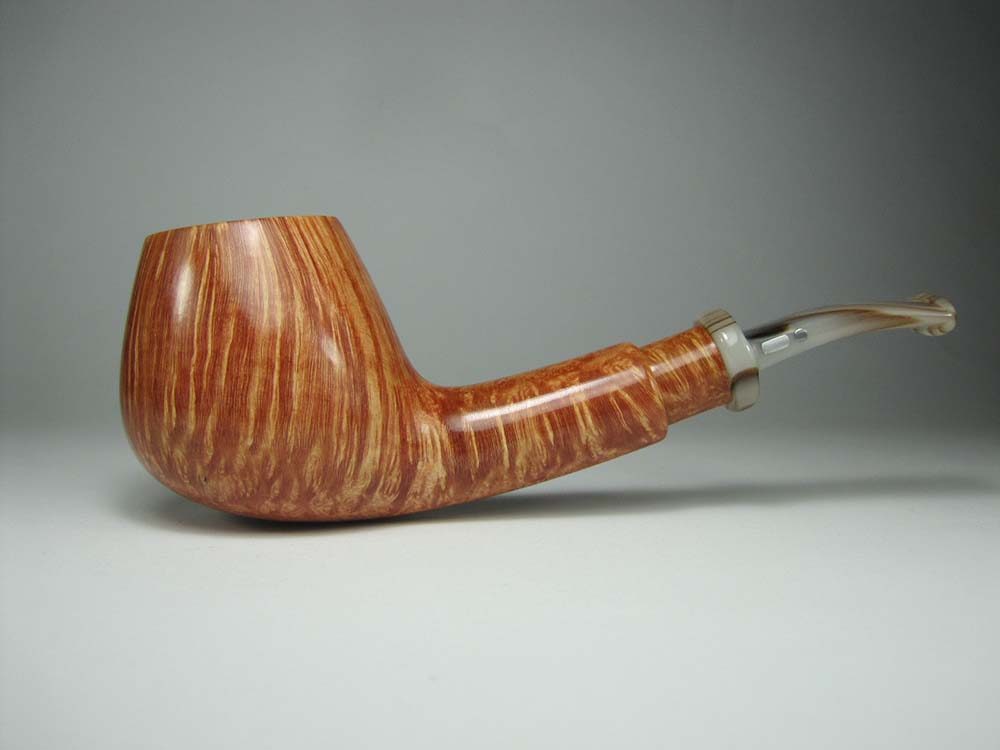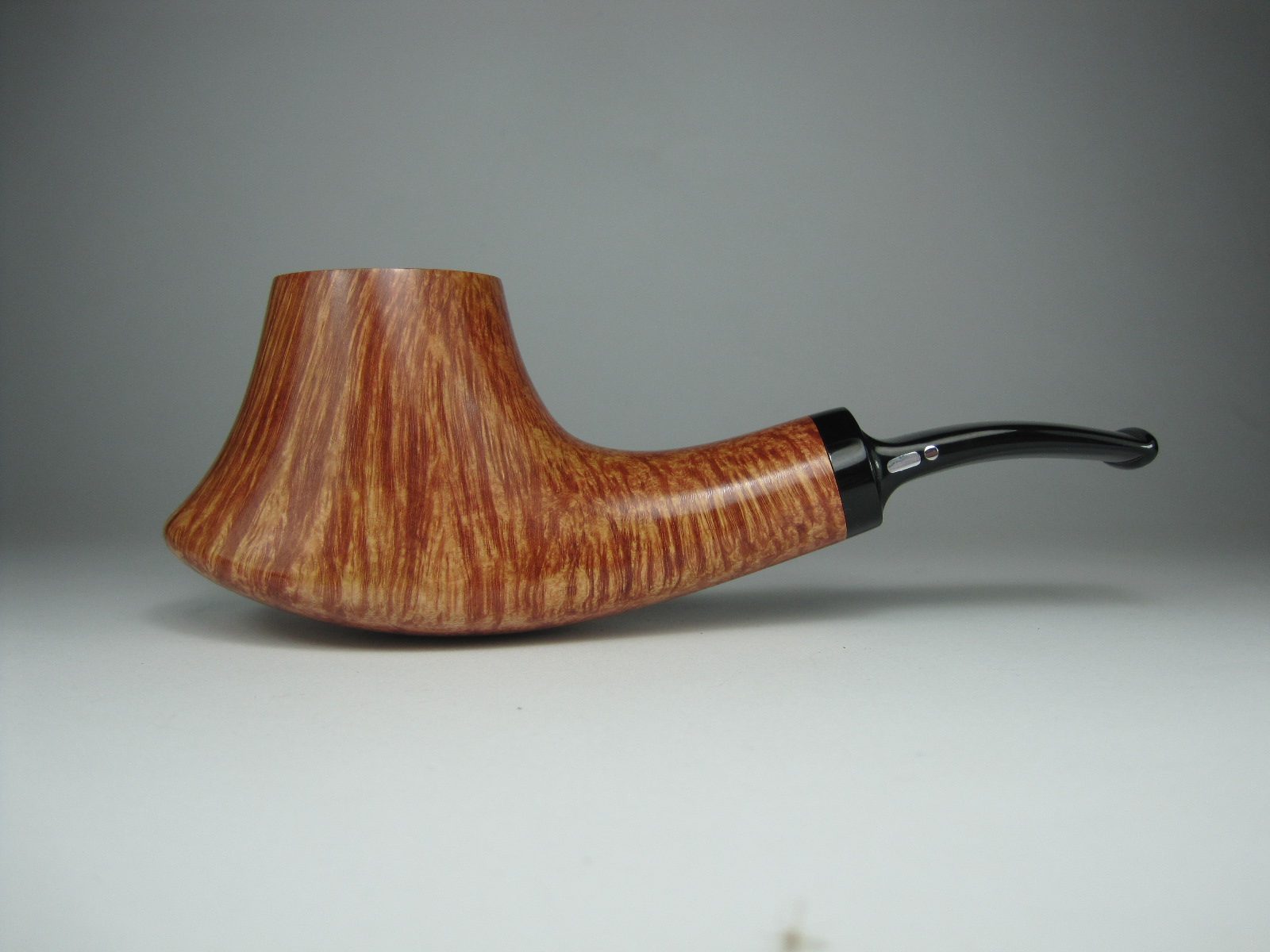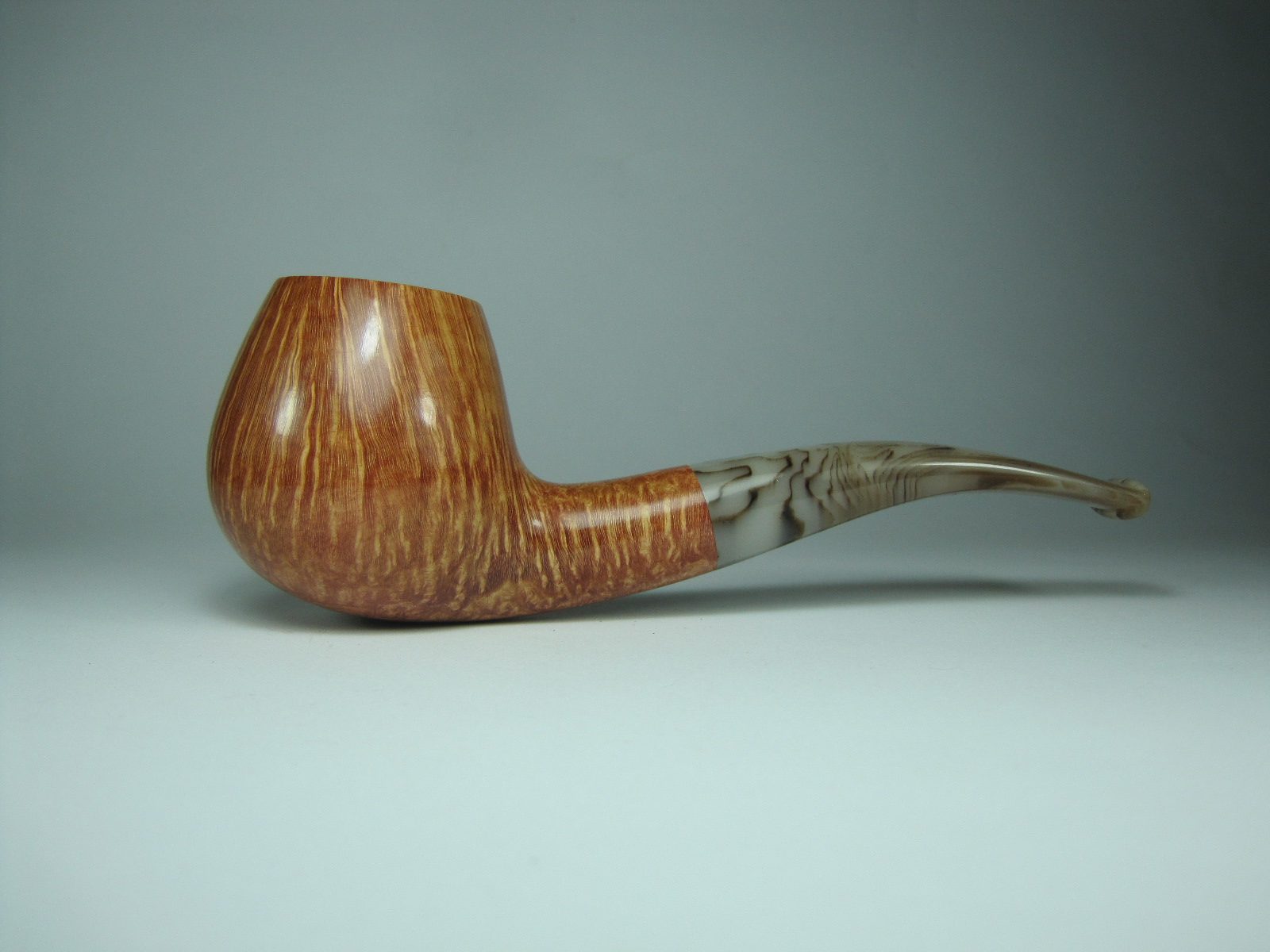{:it}
di Massimiliano Giorgi
Tra le eccellenze delle Marche ci sono gli artigiani della pipa. Qualche produzione di tipo industriale, ma in massima parte si parla di veri e proprio artigianato, spesso interamente “fatto a mano”.
È un vero e proprio “distretto della pipa d’eccellenza” quello marchigiano: marchi prestigiosi come Ser Jacopo, Mastro de Paja, Don Carlos sono noti a tutti gli amanti del lento fumo, e loro e decine di altri più o meno grandi sono derivazione – indiretta o meno – del primo produttore di pipe marchigiano, Non canta la Raganella. Marchio nato nel finire dell’800 e che ebbe fortuna a partire dal secondo dopoguerra, tanto da generare – appunto – molti epigoni e seguaci.
A Jesi, in una traversa del corso Matteotti, sotto l’arco Bisaccioni, si trova ancora il laboratorio di Tonino Jacono, probabilmente il più esclusivo tra i pipai italiani: al di là dell’indiscussa qualità tecnica ed estetica dei suoi lavori, è anche l’artigiano, Tonino ama ripetere che fa una pipa al giorno.

Poco più di 300 pipe l’anno, interamente realizzate a mano, dalla selezione del ciocco di radica (fino a pochi anni fa coltivata da suo suocero, in Calabria), alla finitura.
Si va dalle più economiche Zen (una sua invenzione con fornelli intercambiabili) a quelle commemorative o esoteriche: pipe “cavate fuori” dai migliori pezzi di radica del suo magazzino, coi quali è possibile evidenziare il massimo della bellezza del legno, le venature più armoniose.
“Cavate fuori: la pipa è già dentro il ciocco”: usa quest’epressione Tonino per descrivere la sua opera e gli faccio notare che Michelangelo usava la stessa espressione per lo stesso concetto.
 Non è affatto una forzatura. Tonino fa con la radica lo stesso processo che Buonarroti faceva col marmo: il ciocco grezzo da al primo sguardo l’idea di quale forma possa contenere, forma plasmata seguendo il disegno tracciato dalle venature. Poi a volte capita che levigando il legno esca fuori un’imperfezione, un sassolino rimasto imprigionato mentre la radice cresceva, le venature che cambiano percorso e non si accordano più con la forma che si intendeva dare. E allora si interviene in corso d’opera, si cambia la forma o lo stile secondo quanto detta quel particolare ciocco.
Non è affatto una forzatura. Tonino fa con la radica lo stesso processo che Buonarroti faceva col marmo: il ciocco grezzo da al primo sguardo l’idea di quale forma possa contenere, forma plasmata seguendo il disegno tracciato dalle venature. Poi a volte capita che levigando il legno esca fuori un’imperfezione, un sassolino rimasto imprigionato mentre la radice cresceva, le venature che cambiano percorso e non si accordano più con la forma che si intendeva dare. E allora si interviene in corso d’opera, si cambia la forma o lo stile secondo quanto detta quel particolare ciocco.
La pipa era già dentro il legno, si doveva solo togliere quel che stava intorno.
 Questo percorso non è un problema, se le realizzazioni sono interamente a mano e seguite una ad una secondo le particolarità del legno.
Questo percorso non è un problema, se le realizzazioni sono interamente a mano e seguite una ad una secondo le particolarità del legno.
E non è un problema se il fumatore ha qualche necessità particolare. Negli anni ho potuto concedermi il capriccio di un paio di pipe e qualche accessorio che Tonino ha tirato fuori da miei disegni (scaturiti la mattina, dopo una digestione pesante…).
A parte le mie bizzarre richieste, le pipe di Tonino Jacono sono costruttivamente perfette: un buyer americano, anni fa, invitò a Milano i cinque pipai italiani che per lui erano il top: la fumabilità dei loro prodotti era nota, come la loro bellezza. Ne scelse due: Tonino ricorda che scelse prima le sue, perché erano le uniche che se poggiate su un piano rimanevano in equilibrio, anche con fondello tondeggiante.
E infatti il grosso della produzione delle pipe Jacono finisce all’estero: gli Stati Uniti, mercato storico, e successivamente i Paesi dei “nuovi ricchi”, come Cina e Russia (dove ho dovuto personalmente consegnare ad un suo cliente moscovita una piccola fornitura: “Visto che passi di lì…”, mi disse. Il proprietario del negozio, un giovane e gioviale georgiano, mi fece trascorrere un pomeriggio di amabili chiacchiere nella sala da tè del locale, con una stanza humidor per i sigari, sorseggiando distillati come si confà ad un ambiente accogliente del genere. Ho cercato di non far caso alle facce da forca che negli altri tavoli si stavano godendo il pomeriggio, sollevato dal fatto che dalle loro camicie non spuntassero tatuaggi della Bratva…
Nei suoi 30 anni di attività ha sfornato più di 10mila pipe, molte delle quali in produzione limitata e numerata. Ha trovato anche il tempo di scalare i vulcani attivi più alti al mondo (prima il Cotopaxi – 5.897 m – e poi, quando si è rimesso a fumare, lo Ojos del Salado, 6.893 m), di attraversare il Sahara in bicicletta, di correre un paio di volte i 225 km del tragitto che fece Filippide per annunciare la vittoria di Maratona, più molte stagioni da corridore su lunghe distanze con qualche titolo nazionale.
Lento fumo e lunga corsa, potrebbe essere il motto di Tonino Jacono. IN realtà sono facce della stessa medaglia: fare le cose con cura, fino al dettaglio, non importa quanto difficili o complesse.{:}{:en}Among the excellences of the region Marche there are the artisans of pipes. Some of them are industrial manufacturers, but most of them produce actually hand-crafted pipes, often entirely “hand-made”.
In the region Marche there is a real “district of excellent pipes”: prestigious brands like Ser Jacopo, Mastro de Paja, Don Carlos are well-known to everyone who loves the slow smoking, and those brands together with dozens of others smaller or bigger producers took their know-how – directly or indirectly – from the first producer of pipes in the region Marche, Non canta la Raganella. The brand was created at the end of the Nineteenth century, and became well known in the post World War II, so that many imitators and devotees spread.
 In Jesi, in a cross street of Corso Matteotti, under the arch Bisaccioni, there is still the workshop of Tonino Jacono, probably the most exclusive among the Italian pipe artisans: moreover, the indisputable technical and aesthetical quality of his works, Tonino is also The Artisan, in fact he underlines that he hand-crafts one pipe per day. A bit more than 300 pipes per year, completely handcrafted, from the selection of the log of briarroot (grown in the region Calabria by his father-in-law until few years ago), up to the finishing touches.
In Jesi, in a cross street of Corso Matteotti, under the arch Bisaccioni, there is still the workshop of Tonino Jacono, probably the most exclusive among the Italian pipe artisans: moreover, the indisputable technical and aesthetical quality of his works, Tonino is also The Artisan, in fact he underlines that he hand-crafts one pipe per day. A bit more than 300 pipes per year, completely handcrafted, from the selection of the log of briarroot (grown in the region Calabria by his father-in-law until few years ago), up to the finishing touches.
From the less expensive pipe which is named Zen (Tonino’s own invention with interchangeable chambers) to the commemorative or esoteric pipes: pipes “extracted” from the best pieces of briar-root in his warehouse, that highlight the beauty of the wood, and its most harmonious veining.
“Extracted: the pipe is already in the log of briar-root”: Tonino uses these words to describe his works and I notice that also Michelangelo used the same words to describe the same concept.
It is not a stretch. Tonino works the root in the same way that Buonarroti used to do with marble: the raw log gives at first sight the idea of which shape it contains, the shape is then modeled following the lines of the veining. Then sometimes when you work the wood an imperfection comes out, a smal stone imprisoned during the growth of the root, the veining turn direction and do not match with the shape that was intended. In this case, the artisan changes shape or style in accordance to the log of briarroot.
The pipe was already inside the wood, you only had to remove what was around it.
This way of working is not a problem if you handcraft the pipe and you can inspire from every piece of wood according to the features of the wood.
And is not even a problem when the smoker had special needs. During the years, I managed to have a couple of pipes and accessories that Tonino created out of my drawings (in the morning after a long digestion…).
Apart from my bizarre requests, Tonino Jacono’s pipes are perfectly manufactured: an American buyer invited years ago in Milan the top five Italian pipe artisans: the smokeability of their products was well known, just like their beauty. He chose two pipes: Tonino remembers that his pipes were chosen at first, since they were the only ones that could stand on the table, even with a rounded leg.
In fact the majority of the production of Jacono’s pipes is exported abroad: the US has been an historical market for those pipes, and later the “new rich” countries, like China and Russia (where I personally delivered pipes to one of the customers in Moscow: “Since you are going ther…” he told me. The owner of the shop in Moscow is a young and jovial Georgian guy, I spent a lovely afternoon with him chatting in the tea room of the shop, including a humidor room for cigars, sipping spirits as usual in such cosy places. I tried not to bother too much other people around, satisfied that on their shirts there was no Bratva tattoo…
In his 30 years long career he produced more than 10.000 pipes, most of them are selected, limited, and even numbered one by one. He also took time to climb the highest active vulcanoes in the world (firstly the Cotopaxi – 5.897 meters high, and then, Ojos del Salado, 6.893 meters high). Then he crossed the Sahara desert by bike, a couple of times he ran 225 km along the track that took Pheidippides to announce the victory of Marathon, and then several season sas runner on long distances with some national medals.
Slow smoking and long running, this could be Tonino Jacono’s motto. In reality, it is just two sides of the same coin: make things carefully, up to the details, it does not matter how hard and difficult.{:}
